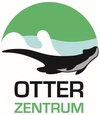What counts as proof
Eurasian otters often leave behind traces that are not always easy to identify. For example, a flattened area of grass does not always mean that an otter rolled around there; there are many reasons why the grass in these areas is flattened. This is the same with feeding grounds—it is impossible to exactly identify if an otter ate there from just the leftovers because other carnivores also leave parts of fish or other prey behind after eating. Instead, partly eaten fish can be used as an indicator and reason to search the area more thoroughly for otter tracks or scat. Thus, a half-eaten koi is not reliable evidence that an otter was there.
When there are still long bones connected to the fish carcass, it indicates that an otter was not the culprit because otters do not pull the meat out from between the bones. This is similar with mussel shells—otters do not usually eat mussels, and in both cases, the perpetrator was most likely either a muskrat or nutria.
Therefore, evidence of an otter can only come in the form of either tracks and/or faeces. Both of these traces are distinct characteristic of otters as long as they are very pronounced and not too weathered.
Of course, dead and living animals (e.g. foundlings) can also be counted as evidence as long as the appropriate details (location, finder, hunting licence) are noted. Sightings of otters should be documented by photos because a nutria, muskrat, or mink can easily be confused for an otter. Recently, more and more camera traps have also helped observe otters.
Hence, only photos of clearly identifiable tracks or scat as evidence of otters should be entered into OTTER SPOTTER. The best way to do this is by attaching a digital photo to the entry (max. 2 MB, otherwise send it by email) of the tracks and/or scat. In the case that scat is found for the first time in a certain region, it must be particularly closely inspected and should be quickly sent to us in a small container after being dried for 1 or 2 days.
In general, all entries of otters will be reviewed by us in-house as quickly as possible. When we do, you will receive a response from us. If the evidence is not easily and clearly identifiable, up to three external experts will be asked to give their opinion before a decision is made.






